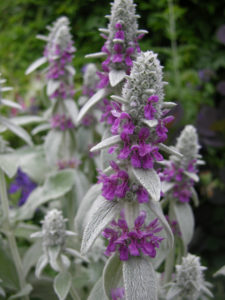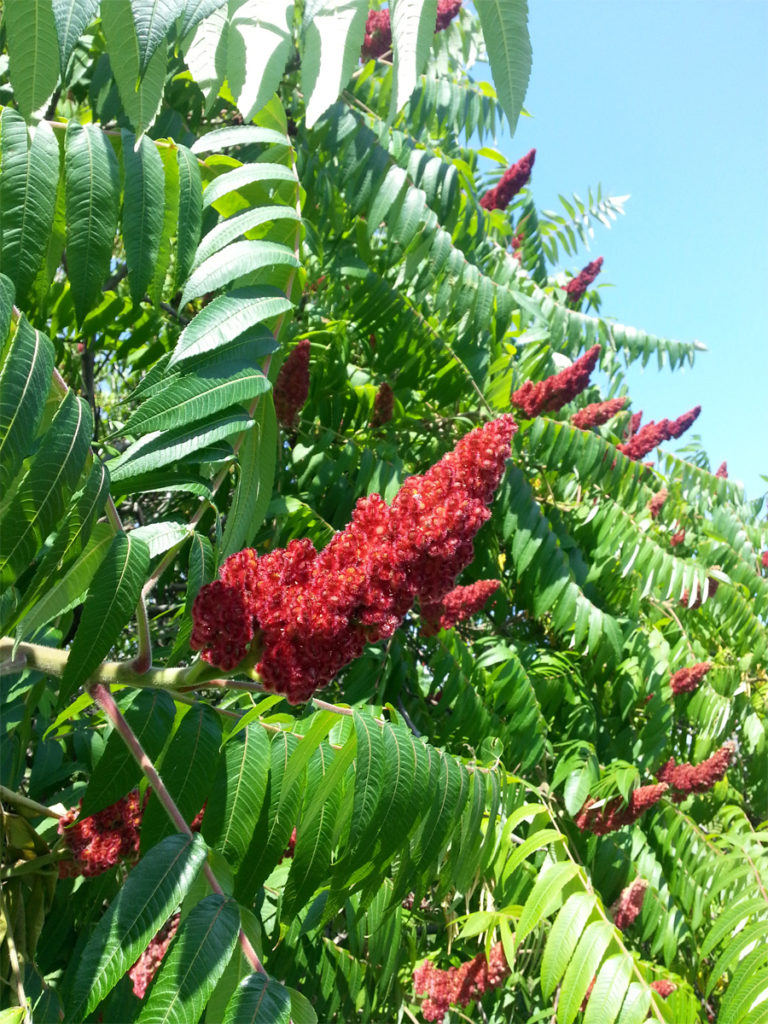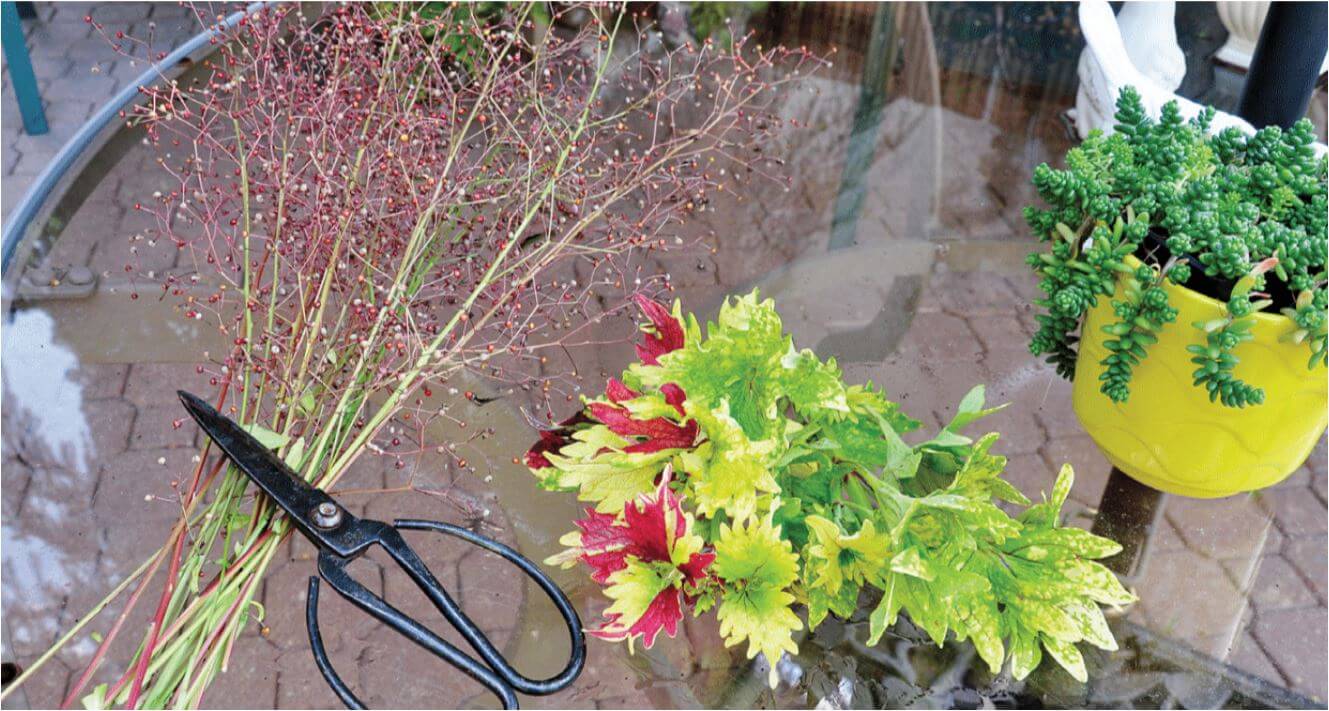Drought-Tolerant Gardens
Water-wise plants and drought-tolerant gardens
As our climate changes, many areas are experiencing hotter and drier summers with periods of drought, lower humidity and intense heat. Add to that the water use restrictions in place in many urban municipalities, or a necessarily healthy respect for the capacity of a rural well, and the pressure is on for gardeners to adapt their gardening practices to use less water.
So how can you have an attractive, thriving garden, and conserve water?
1. Start by choosing plants that will thrive in dry conditions.

There are many drought-tolerant plants for both the sunny and shady areas of your garden. So make smart choices by considering plants’ water needs, and choosing the ones that require less water. Many North American native plants are drought-tolerant, and are pest- and disease-resistant too.
Notice the plant’s characteristics and growth habit. In general, plants with foliage that is grayish or silver, small or fine, and fuzzy or hairy are well suited to dry conditions. Waxy foliage is another clue that the plant retains moisture. And have a sniff. Plants with fragrant foliage such as herbs often produce oils that help the plant to prevent drying. If you’re choosing a non-native, consider its area of origin: plants that originate in arid parts of the world such as the Mediterranean will be adapted to drier conditions.
2. Keep your plants healthy.
Healthy, vigorous plants will withstand dry conditions far better than their weaker cousins, so choose robust plants of pest- and disease-resistant varieties, and check hardiness zones if you’re planting perennials. Once you’ve chosen the plants provide optimal conditions for their growth, including appropriate water use.
3. Prepare the soil for the plants you choose.
Some plants prefer richer soil while others, including many natives, actually prefer poor soil. Provide the conditions for the plant to thrive, and ensure that the soil has some capacity to retain moisture and provide nutrients.
4. Site plants appropriately.
Your plants will be healthier and thus more drought-tolerant if you site them in their optimal conditions. So consider your site, and choose plants accordingly. Exposure to hot afternoon sun will create a much drier site than morning sun and afternoon shade. Wind is drying as well, so consider providing wind protection in exposed sites. Shady sites can be surprisingly dry, particularly under trees or under a roof overhang, so check the soil and know the conditions that you’re planning to plant in.
Plant in groupings both for visual effect and to allow plants to shade each other’s roots. Grouping plants with similar water requirements is efficient for water use: by keeping thirstier plants together in one part of the garden, you can restrict watering to that area and use less water overall.
5. Make your container planting water-wise.
Plants in containers need to be watered more frequently than those in a ground bed because the planting medium dries out considerably faster. But you can reduce that demand. Start with a planting medium with water retention properties. Put a wet sponge or used teabags in the bottom of the pot before you plant to slow (but not block) drainage. Then mulch the containers as you would a ground bed. (Adding all natural coir to your containers helps to retain moisture for up to a week).
Reduce water absorption by a clay or wooden container by lining it with plastic. Be careful, however, to leave the bottom unlined to allow drainage, otherwise you may be coping with waterlogged rather than thirsty plants. Another option is to plant in a small container, and place it inside a larger container with a lining of an insulating material such as mulch or moss. The added insulation will slow the water loss from the planted container. And finally, consider the shape of the container and choose accordingly: small, tall and narrow containers will dry out faster than large, wide ones.
6. Help your plants get established by watering well at first.
Encourage deep roots by watering deeply, and don’t keep the soil saturated. Over-watered plants are much less likely to survive a drought because their roots remain close to the surface. Gradually reduce the frequency of watering: ideally, you are conditioning the plant to thrive on rainfall alone after its first season.
Annuals don’t have enough time to get well established in one growing season, so if you plant annuals you will use more water. The same advice regarding watering applies: water thoroughly, and don’t keep the soil saturated. If you collect seed from annuals be aware that dry conditions will reduce seed production. Deadhead and feed annuals appropriately to keep them healthy.
7. Make the most of the water you use.
Covering exposed soil with mulch will prevent evaporation, absorb dew and surface water and release it to the soil, and keep soil cooler. Many mulching materials are readily available and in common use, such as wood chips, shredded bark or leaves, and compost. Straw works well in the vegetable garden. Remember to keep the mulch pulled back from the stems of plants to prevent rot. Mulch will also control weeds, which rob plants of moisture and nutrients, and make work for the gardener.
Give your plants time to absorb the water you provide: slow the flow, and don’t allow the precious resource to run off. Soaker hoses are particularly helpful in maintaining a slow, steady supply of water close to the roots and are easily concealed under a layer of mulch. Hand watering puts the water precisely where you want it.
Water early in the morning to avoid evaporation in full sunlight, and to allow the plants to dry off before nightfall. Wet foliage is susceptible to disease.
8. Consider the source of the water you use.
Water from the tap is cold, and is treated if it’s not directly from a well. Your plants prefer rainwater. Install and use a rain barrel, and collect the rainwater that would otherwise run off, or into storm drains. You’ll cut your water use, and reduce the load on urban water treatment plants at the same time. Rain barrels are available from retail sources, and many municipalities have programs to reduce rain barrel costs and encourage use. Rain barrels can be linked in sequence and fitted with attachments for your soaker hose or sprinkler, or to fill your watering can.
9. Finally, create site conditions that will reduce water demand.
Create shade and a more humid micro-climate by planting rought-tolerant trees or shrubs. Reducing the amount of turf in your yard will save water too, since turf requires much more water than garden plants and groundcovers, not to mention the time and energy spent feeding and mowing. And what would you rather look at in August, an expanse of dormant brown turf or a garden bursting with bloom?
For some ideas of drought tolerant plants, click here.




Pingback: Drought-tolerant plants - Canada's LOCAL Gardener magazine